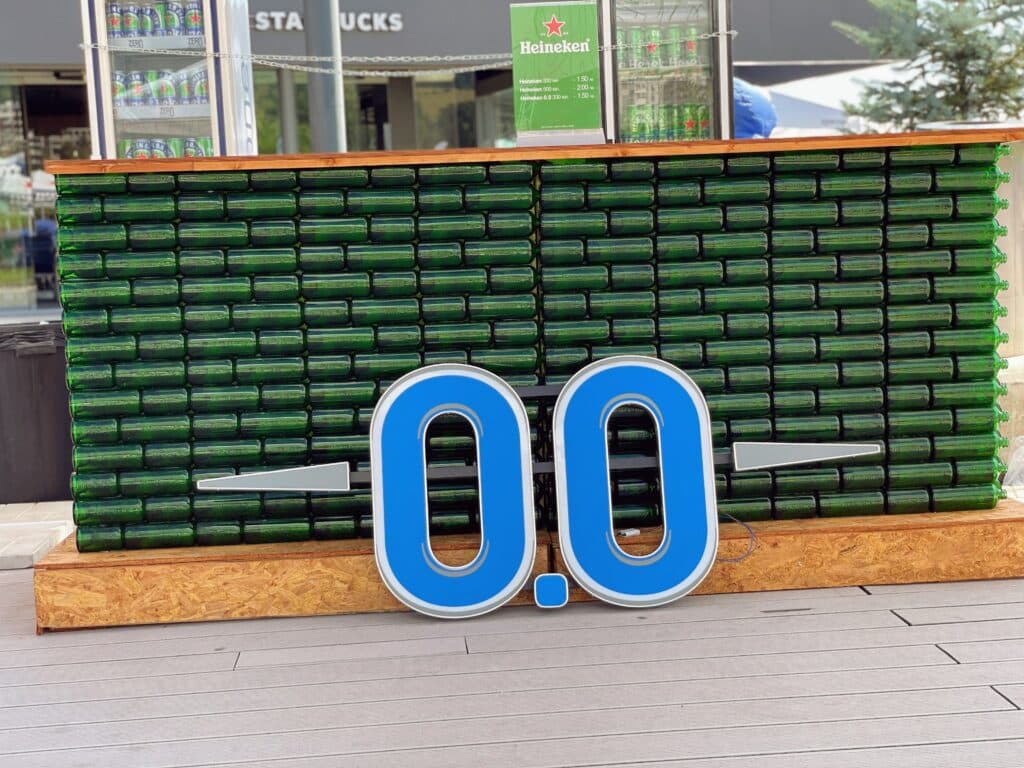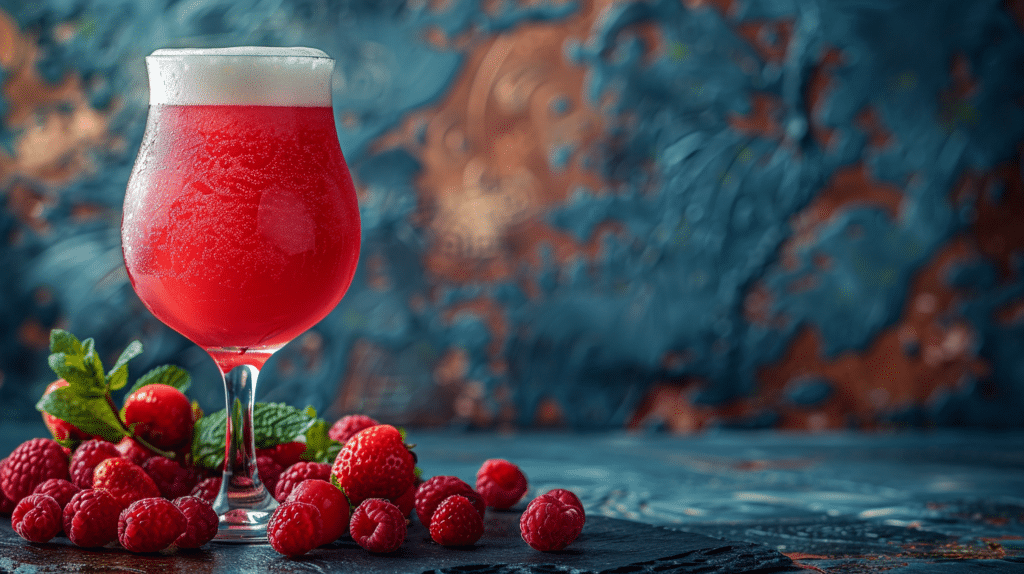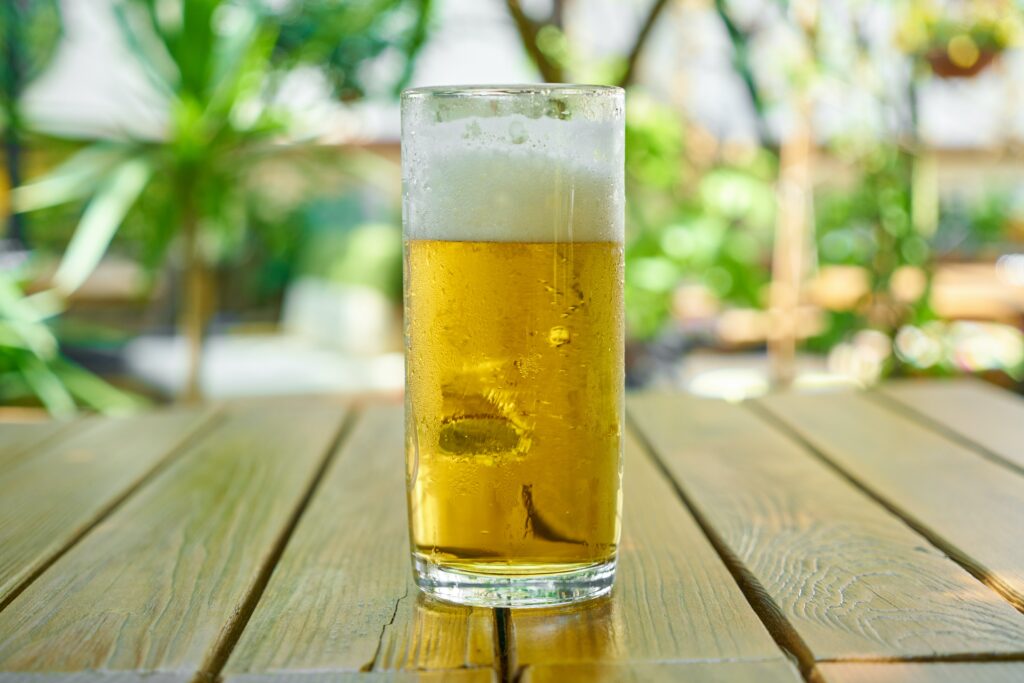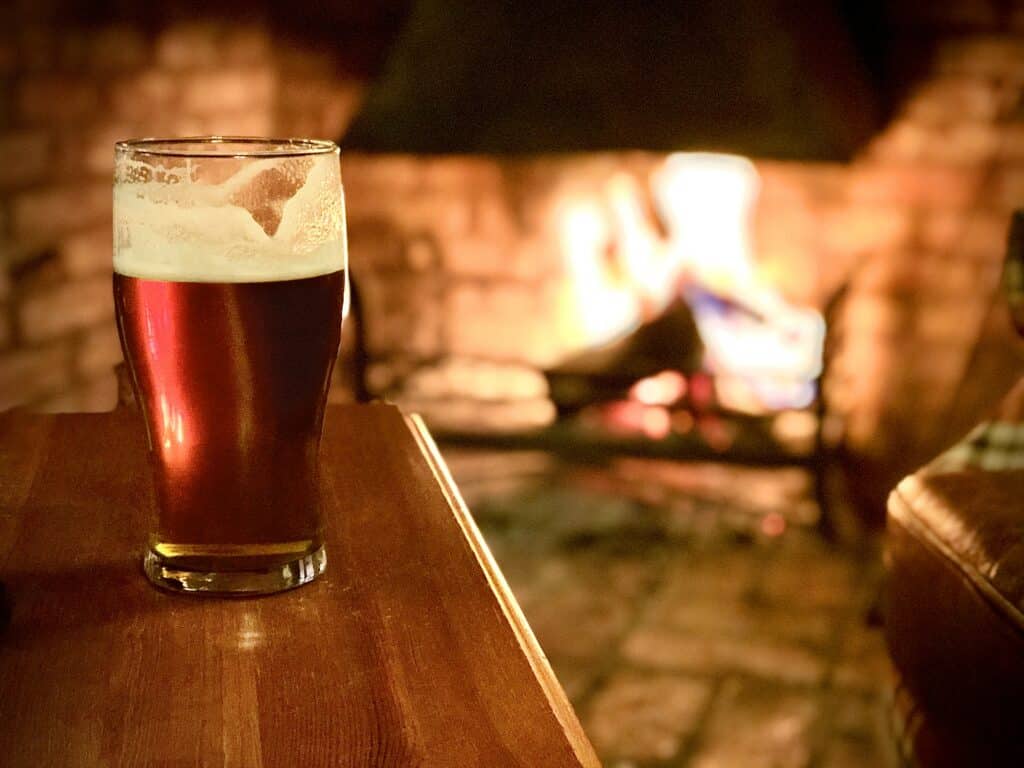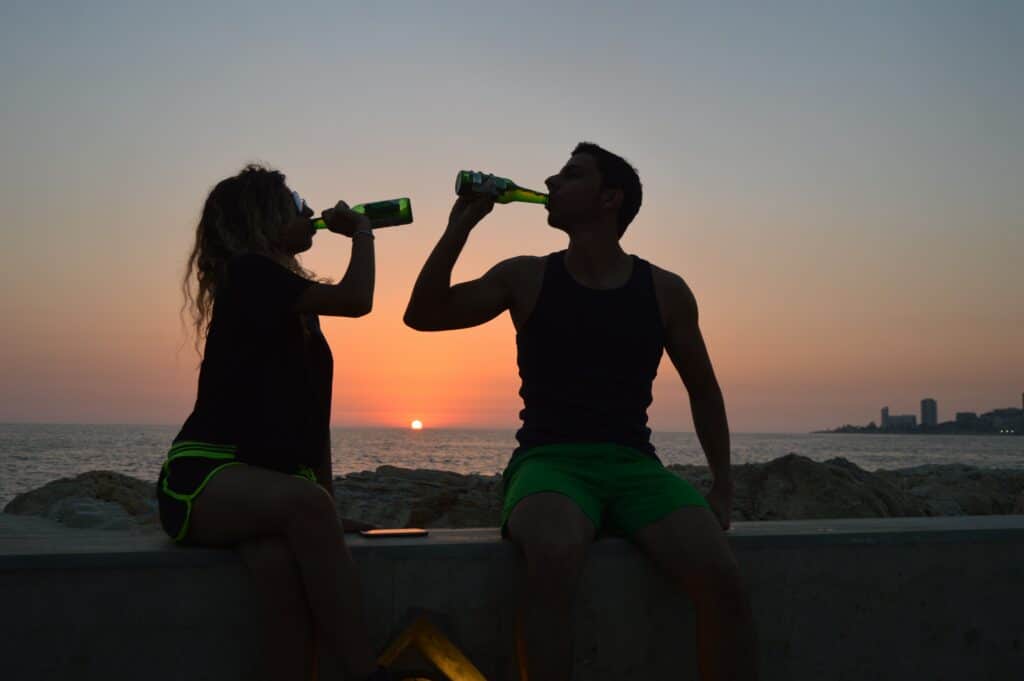Disclaimer: This post may contain affiliate links, from which I may earn a small commission at no extra cost to you. Thank you for supporting Ale Affair.
Non-alcoholic beer is becoming incredibly popular, and rightly so. Perhaps not yet in my household, but maybe one day when the hangovers begin getting too much to handle. In fact, they’re usually a pretty good alternative when you are hungover! This article will explore non-alcoholic beer, its history and why Gen Zers just can’t get enough.
What is Non-Alcoholic Beer?
It should come as no surprise to you that non-alcoholic beer is a type of beer that contains very little alcohol, typically less than 0.5% alcohol by volume (ABV). This allows it to be legally categorised as alcohol-free in many places, although regulations vary by country. The main difference between non-alcoholic beer and traditional beer is the alcohol content. Traditional beers typically have an ABV of 4% to 6% or higher, depending on the style and brewing process.
The production of non-alcoholic beer is similar to that of traditional beer—it involves brewing a standard beer with water, malt, hops, and yeast. However, after fermentation, the alcohol is removed or reduced through various methods that maintain as much of the beer’s traditional flavour and aroma as possible.
The History and Evolution of Non-Alcoholic Beer
The history and evolution of non-alcoholic beer span several decades, evolving from rudimentary attempts to modern, sophisticated processes that better retain the flavour and character of traditional beer.
Early Developments: Prohibition Era
The significant history of non-alcoholic beer is often traced back to the Prohibition era in the United States (1920-1933) when the production, sale, and transportation of alcoholic beverages were banned. To stay in business, brewers began producing “near beer” with very low alcohol content (up to 0.5% ABV).
These early non-alcoholic beers, like Bevo produced by Anheuser-Busch, were generally not well-received due to poor taste.
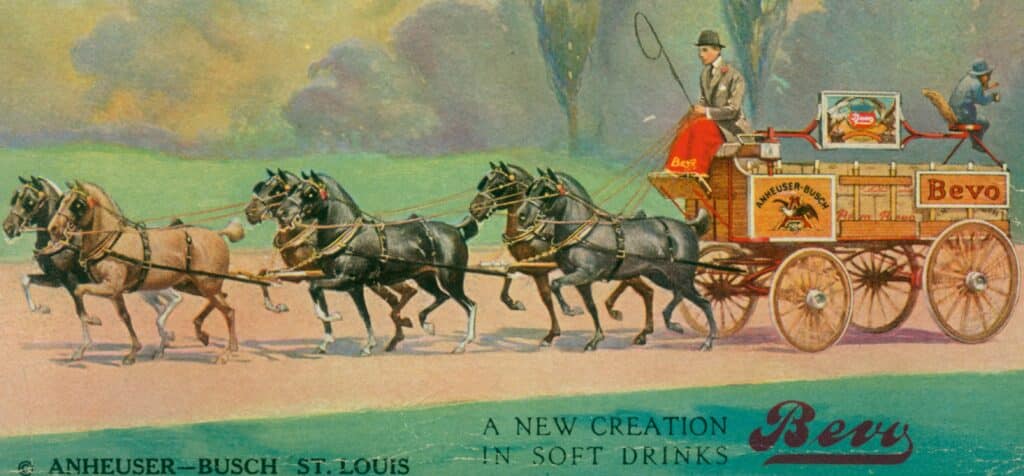
Technological Advances: Late 20th Century
Significant improvements in producing non-alcoholic beer didn’t occur until the latter half of the 20th century as brewing technology advanced. German brewers, in particular, were pioneers in developing better techniques, such as vacuum distillation and reverse osmosis, to remove alcohol while attempting to preserve the original beer flavours.
Modern Market & Global Reach
The craft beer movement has embraced non-alcoholic beer. Many craft breweries now offer non-alcoholic options that maintain high standards of flavour and variety. This shift has helped improve the reputation and acceptance of non-alcoholic beer as a legitimate choice in the beer market.
Non-alcoholic beer has seen growth in markets outside the US, particularly in Europe and the Middle East, where there are cultural and religious reasons for avoiding alcohol. Countries like Spain and Germany have developed a substantial market for non-alcoholic beers.
How is Non-Alcoholic Beer Made?
Non-alcoholic beer is made using processes similar to regular beer but with additional steps to remove or reduce the alcohol content. Here’s an overview of how it’s typically produced:
Mashing and Brewing
Like regular beer, non-alcoholic beer starts with the mashing process, where malted grains (usually barley) are mixed with hot water to extract fermentable sugars. This mash mixture is then boiled with hops to add flavour and aroma.
Fermentation
The sugary wort produced from brewing is cooled, and yeast is added to begin fermentation. The yeast consumes the sugars and produces alcohol and carbon dioxide. For non-alcoholic beer, this process might be modified to limit alcohol production. There are a few fermentation methods to achieve this:
- Limited Fermentation: Fermentation can be controlled by reducing the amount of time the yeast is active or by using unique yeast strains that produce less alcohol.
- Interrupting Fermentation: The fermentation process can be stopped prematurely (by cooling, for example) before significant alcohol is produced.
Removing Alcohol
If the fermentation proceeds normally, alcohol must be removed afterwards. This can be achieved through several methods:
- Heat: Alcohol can be evaporated by gently heating the beer. However, this can sometimes affect the flavour.
- Vacuum Distillation: The beer is heated under reduced pressure, which allows the alcohol to evaporate at a lower temperature, helping to preserve the flavour.
- Reverse Osmosis: This process filters the beer through a semi-permeable membrane that allows alcohol and other small molecules to pass through, separating them from the larger flavour molecules.
Final Adjustments
After alcohol removal, the beer might lack some of the body and flavour typical of alcoholic versions. Brewers might add carbon dioxide for fizz and sometimes additional flavours or stabilisers to improve the taste and mouthfeel.
Packaging
The final product is then carbonated (if not already), pasteurised to kill any remaining yeast and microbes, and packaged in bottles, cans, or kegs.
The goal is to produce a beverage that mimics the taste of its alcoholic counterpart as closely as possible while containing very little to no alcohol. The process varies between breweries, and different brands might use distinct methods or combinations to achieve their desired flavour profile.
Taste Comparison Between Non-Alcoholic and Alcoholic Beer
So, here’s one of the moments I imagine you’ve been waiting for. Does non-alcoholic beer taste the same? I have given you my thoughts below in a few different areas.
Flavour Intensity and Complexity
Non-alcoholic beer’s flavour tends to be milder and sometimes less complex than general beer. Non-alcoholic beers often struggle to fully replicate the depth provided by alcohol. However, notable advances in brewing technology are beginning to significantly improve their taste, making some nearly indistinguishable from their alcoholic counterparts in casual tasting – take Guinness and Guinness 0.0, for example.
Body and Mouthfeel
Non-alcoholic beer can feel lighter and thinner on the palate. Brewers often add other ingredients to enhance the mouthfeel, but it can differ noticeably from alcoholic beer.
Aftertaste
Non-alcoholic beer tends to have a quicker, cleaner finish, which some drinkers actually prefer, especially those looking for a refreshing beverage without residual heaviness. Alcohol can often leave a lingering taste in one’s mouth.
Varietal Accuracy
I have tried a large variety of non-alcoholic beers now, from stouts to lagers. While many non-alcoholic versions do an excellent job of mimicking specific styles, subtle nuances are often lost or diminished. For instance, hoppy non-alcoholic beers don’t always have the same bitterness edge as their alcoholic equivalents, and malty styles sometimes lack some sweetness or depth.
For me, while non-alcoholic beers have made significant strides in flavour development and variety, there are inherent differences due to the absence of alcohol. Of course, these differences are becoming less pronounced with new brewing techniques and ingredients, which help bridge the gap in taste and experience.
Non-Alcoholic Beer Taste: Reddit Edition
Many of you might be thinking, well, Mr Aleaffair, why should I care about your view? Rude but fair. Let’s look at how Reddit users have described the taste of non-alcoholic beer.
First up, one Redditor, when asked whether non-alcoholic beer tastes the same, stated: “No, it does not. However, it does taste quite refreshing and a bit sweet, so if you stop calling it beer and instead refer to it as an isotonic soft drink, it’s quite nice.”
“Had a non-alcoholic Guinness yesterday, and it’s pretty much the exact same flavour profile.”
“Non-alcoholic beer tastes far worse than beer and thus is stupid to drink.”
Ok, that is enough of Reddit – I often don’t know why I bother!
Consumer Perceptions and Market Trends
Let’s jump into the market trends and perceptions for the numbers lovers out there. Consumer perceptions of non-alcoholic beer have evolved significantly, driving an expanding market globally.
Consumption Trends
The market for non-alcoholic beer has been experiencing significant growth. As of 2023, the global market size for non-alcoholic beer reached approximately $20.16 billion and is expected to grow to $28.79 billion by 2027, reflecting a compound annual growth rate (CAGR) of about 9.3%. The market’s expansion is driven by a rising awareness of health benefits associated with non-alcoholic beer and a shift in consumer preferences towards healthier alternatives to alcoholic drinks.
Regarding specific market share, non-alcoholic beer held a significant segment of the overall market, with sales being predominantly strong in supermarkets due to consumer preferences for convenient shopping locations. North America emerged as the largest market for non-alcoholic beer in 2022, indicating a strong regional preference for these products.
The increasing consumer interest in non-alcoholic beer is also supported by innovations and product launches by key industry players, aiming to cater to the health-conscious consumer and those looking for alternative beverage options due to dietary restrictions or personal choices.
European Market

The non-alcoholic beer market in Europe is showing strong growth and is projected to continue expanding. As of 2023, the market size reached €8.6 billion, with expectations to grow to €15.4 billion by 2032.
The market is evolving with significant investment in research and development to enhance the flavour profiles and overall quality of non-alcoholic beverages, making them more appealing to a broader audience. These efforts are complemented by innovative packaging and branding strategies aimed at attracting younger demographics and health-conscious consumers.
For CAGR, the European non-alcoholic beer market is anticipated to grow at over 5.5% from 2023 to 2032—so get your stocks today (this is not qualified stocks and shares advice). This indicates a robust and steadily increasing demand for non-alcoholic beer, supported by a strong presence of major breweries and liquor manufacturers actively expanding and innovating in this category.
5 Reasons Behind Non-Alcoholic Beer’s Popularity
Health Consciousness: There is a growing trend towards health and wellness (one I need to get involved with), which includes reducing alcohol consumption. Non-alcoholic beer offers a way to enjoy the social and cultural aspects of beer drinking without the dreaded health risks associated with alcohol.
Calorie Reduction: Some of us are trying to lose a few pounds. Non-alcoholic beer generally contains fewer calories than alcoholic beer, appealing to consumers monitoring their caloric intake. It is also often more healthy than soft drinks, such as Coke!
Inclusivity: Non-alcoholic beer provides an option for those who do not drink alcohol for religious, health, or personal reasons, making social environments more inclusive. Just make sure you have friends who don’t peer pressure you!
Driving Safety: In the world of Uber, we often do not need to think about designated drives. However, non-alcoholic beer is a responsible choice for designated drivers or anyone who wants to avoid drinking and driving.
No Hangover: Enjoying non-alcoholic beer means avoiding the hangover associated with alcohol consumption, which is why I sometimes choose one on a weekday.
Overall, the rising popularity of non-alcoholic beer reflects broader cultural shifts towards health and wellness, along with improvements in product quality that make non-alcoholic options more appealing. The industry’s growth is expected to continue as these trends persist and consumer preferences evolve.
The Best Non-Alcoholic Beers Available
It would be rude of me not to share what I think are the best non-alcoholic beers available today. So, here are seven of the best non-alcoholic beers to try!
- Run Wild IPA (Athletic Brewing Co.): Brewed with a blend of Northwest hops, Citra, and Mosaic, this IPA features premium organic malts from the US and Germany.
- Erdinger Alkoholfrei (Erdinger Weissbräu): Erdinger’s non-alcoholic wheat beer has the same great taste and aroma as their traditional beer.
- Free Wave Hazy IPA (Athletic Brewing Co.): This mouth-watering IPA is loaded with Amarillo, Citra, and Mosaic hops.
- Nanny State (BrewDog): On the nose, there’s a strong scent of pine with hints of fresh oranges. On the palate, tropical fruits like pineapple and mango come to mind, with a malty and biscuity finish.
- Guinness Draught 0.0 (Guinness): This stout is unmistakably Guinness, just without the alcohol. It features the same dark, ruby-red liquid and creamy head, with hints of chocolate and coffee.
- IPNA (Lagunitas Brewing Co.): A non-alcoholic, full-flavored IPA, dry-hopped with Mosaic & Citra hops.
- Clausthaler Dry Hopped (Radeberger Gruppe): Full-bodied and hoppy with hints of malty caramel, Clausthaler Dry-Hopped is a beer connoisseur’s dream.
Let us know your favourite non-alcoholic beer and whether it is featured on this list!
Summary
Right, let’s summarise this mother. Non-alcoholic beer, containing less than 0.5% ABV, is brewed similarly to regular beer but includes additional steps to remove or limit alcohol content. Techniques like limited fermentation, vacuum distillation, and reverse osmosis help preserve beer’s flavour and aroma.
Originating during the Prohibition era, non-alcoholic beer has evolved significantly, with modern brewing advances enhancing its taste. It’s gaining popularity due to health benefits, fewer calories, and inclusivity. The market, especially strong in Europe and North America, continues to grow as consumer preferences shift towards healthier alternatives. Various non-alcoholic beers offer diverse tastes, mimicking traditional beer styles effectively. Be sure to share your favourite!
FAQs
Is non-alcoholic beer 100% alcohol-free?
Non-alcoholic beer is not 100% alcohol-free; it typically contains less than 0.5% ABV, allowing it to be legally classified as alcohol-free in many regions.
Can you get a buzz from non-alcoholic beer?
It is highly unlikely to get a buzz from non-alcoholic beer due to its very low alcohol content, which is insufficient to cause intoxication in most individuals.
How many non-alcoholic beers does it take to equal one regular beer?
To match the alcohol content of one regular beer (around 5% ABV), it would take about ten non-alcoholic beers (each with less than 0.5% ABV).
Share Now!
Raise a glass to knowledge! Each article you share pours a little more wisdom into the world, frothing with ideas and bubbling with insights.
